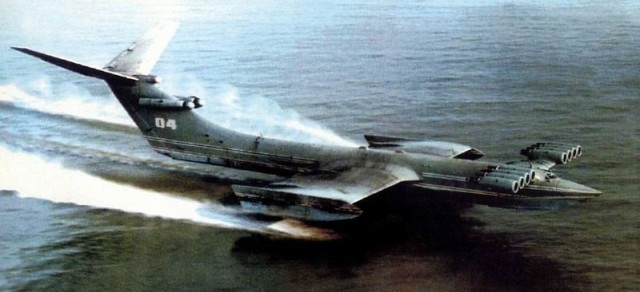Rostislav Alexeyev loved hydrofoils. He was so enamored with the idea of hydrodynamic lift, in fact, that he developed the world’s first commercially-viable hydrofoil. Remembering that Bernoulli’s principle applies to any fluid, it is no wonder that he loved hydrofoils. Underwater wings can reduce the hydrodynamic drag acting on a vessel.
Boeing made the 929 in the 1970’s; there are lots of AvGeeks that consider hydrofoils to be a worthy marine pastime. Alexeyev, however, took things a step further.
To understand where he was coming from, one needs to consider the concept of ground-effect. When an aircraft is in ground-effect (roughly 1/2 the distance of the wingspan of an aircraft and the ground) it has some very interesting drag and performance characteristics. For instance, for a given wing area the force of lift is stronger, the drag is lower, and the thrust needed to stay aloft is less. Either way, the aerodynamic drag is much lower than the hydrodynamic drag.
Aircraft in Russia had TsAAGi as their equivalent of NASA. Hydrofoils and ekranoplans were shuffled off to TsKB po SPK (it’s even longer in Russian) in 1958. Before then, almost all of the research was done directly by Alexeyev within TKB-19 (his equivalent of an aircraft’s OKB)
Alexeyev wondered what would happen if you put wings on a boat. The thing is, an extremely fast, fuel efficient, heavy lift ground-effect vehicle would be one of strong military interest. This happened sometime in either late 1957 or immediately prior to the creation of TsKB po SPK – the sources are ambiguous. Either way, the military was interested and they made it a top-secret priority.
